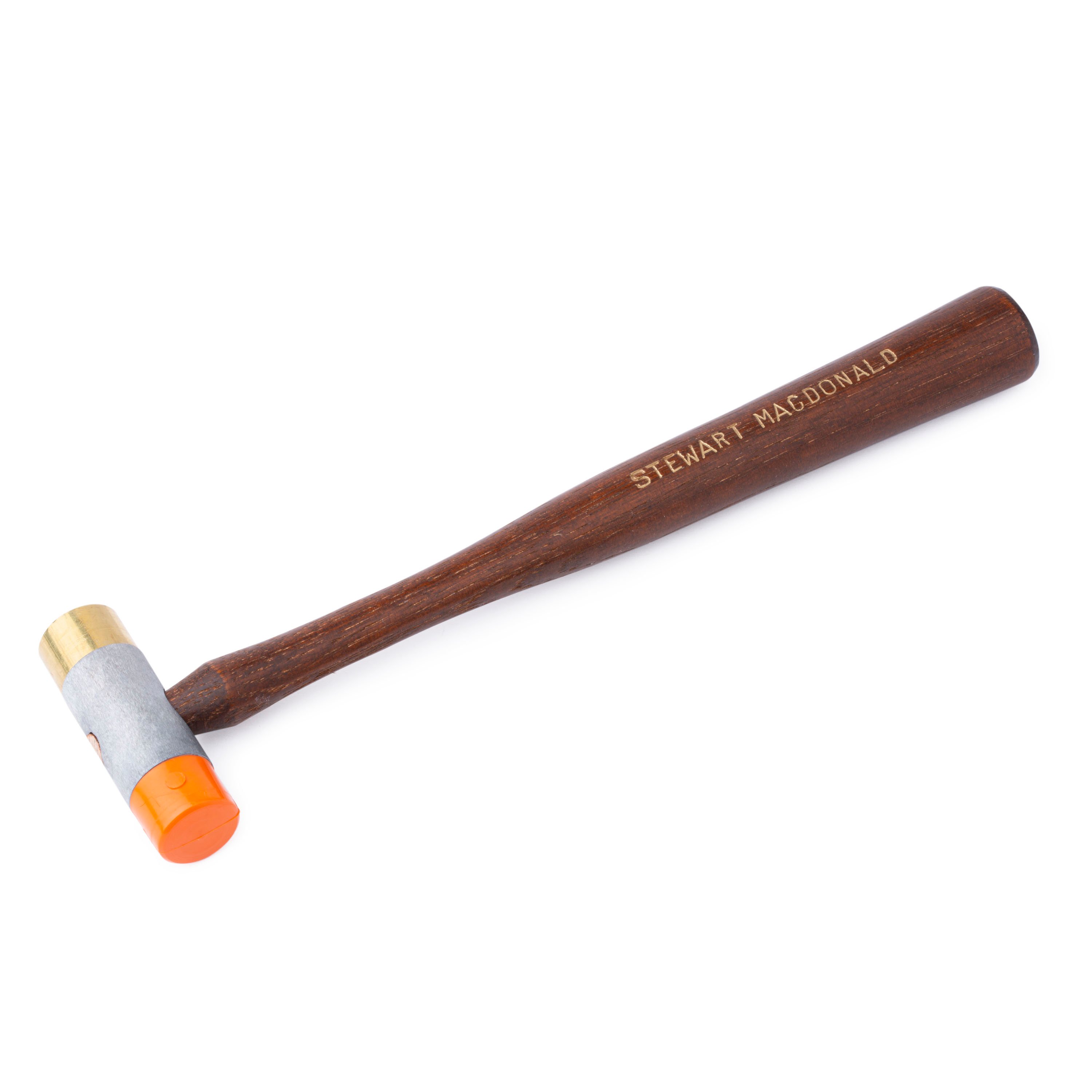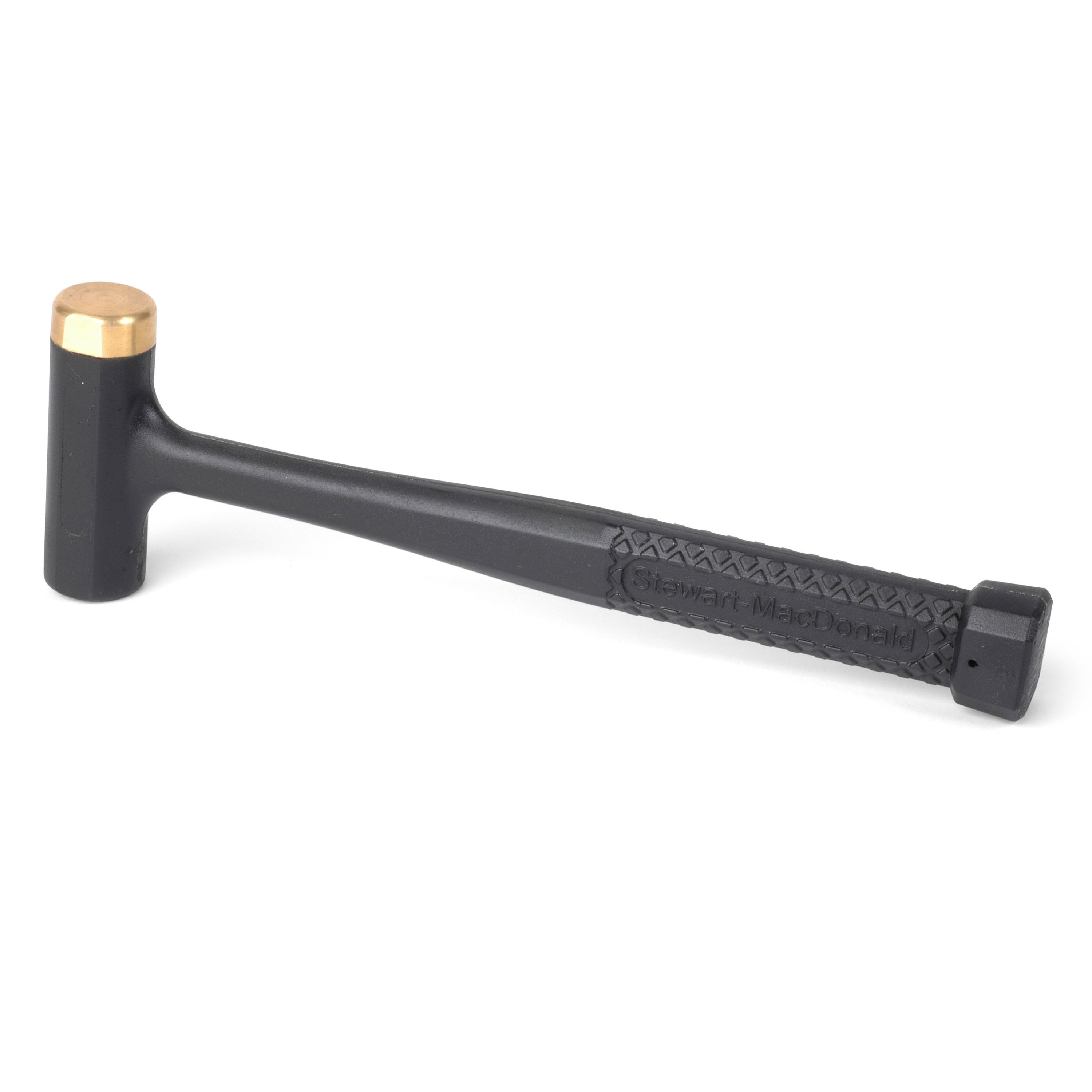How to hammer frets
Gene Imbody explains the basics of installing frets using a fretting hammer.
A fret hammer is the most basic tool for installing frets, but there's a definite technique to it. It's not like hammering a nail! Here are a few trade secrets from Gene Imbody, of United Lutherie in Jacksonville, Ohio. Gene's a skilled guitar repairman, and his advice on hammering will get you off to a good start: Your fretting hammer should feel comfortable in your hand and have a solid, non-marring surface. The weight's important: the hammer head must be heavy enough to seat the fret firmly (tap-tap-tapping with a light hammer won't do). A carpenter's hammer is too hard — it's a sure way to damage frets. Check out our Fretting Hammer: the convex brass head makes the striking surface very accurate, especially in the upper range of the board where the frets are close together. There's also the shock-absorbing Deadblow Hammer: the shot-filled head won't bounce like a regular hammer, so it transfers more energy directly to the fret. This helps seat the wire more firmly, with fewer hammer blows and less chance of the fret springing back. Both have a brass face is hard, but not as hard as fretwire, so it makes excellent impact without denting the fret crown. The other size of the hammer is plastic, which is ideal for delicate work (like small mandolin wire). Some people prefer the less lively feel of the plastic head for all fretwork. The first thing to realize is that hammering isn't a good way to describe this work. It's a mistake to pound a fret as you would a nail. Think of the hammer's impact as one single dead blow to the fret, with no recoil. The hammer head should make solid contact with the fret, seating it with only one blow. The act of repeated hammering produces a spring-back effect on the neck, and this bouncing leads to poorly-seated frets. Bouncing/hammering also risks damage to the instrument. The idea behind a dead blow strike is to provide solid positive force to push the fret into the slot. The other side of this equation is a solid surface below the neck to absorb the force of the blow while supporting the neck. A good neck rest is critical. Build or buy one made out of hardwood with a tough, yet forgiving covering to protect the finish on the back of the neck (leather's good, and cork is popular, too). The rest should not wobble or teeter, and it should hold the fretboard level with the benchtop. Some luthiers prefer a heavy shot-filled bag rather than a wooden neck rest. Experiment to see what works best for you. Either way, make sure there is a stable spot on your bench to place your neck rest. Move away from the springy middle of your bench and work over one of the legs. You might want to put a fifth leg on your workbench: adding a 4"x4" post connecting the benchtop to the floor provides excellent reinforcement for hammering. After telling you to hit that fret home with one blow, and not to tap-tap-tap it, now I'm going to tell you not to slam it either! If you get too heavy handed, it's possible to over-seat the fret, which will cause it to be a low fret. I find that ergonomics is important: get in a comfortable position over the instrument and keep your feet planted solidly on the floor. Your hammering arm should be held close to your body and provide fluid, controlled blows, while your free hand holds the neck. Don't forget this important point: wear earplugs. Hammer an entire fretboard, and your ears will ring like you just finished band practice! One last tip is pictured above: slightly over-radius the fret, and tap its ends down first. If you then work the fret down from the center to the opposing edges, the barbs of the fretwire will work itself sideways slightly, helping to lock the fret into place. Many people avoid the possible pitfalls of hammering by pressing frets. Pressing is a great way to get the job done, but it requires a greater investment in tools. Even when you have the tools, you can't always press every fret every time. Some instruments respond better to hammering, and pressing frets over the body of many instruments is difficult to impossible. You'll always need good hammering technique and a good hammer. It's not a bad idea to pick up a spare fret board and some extra wire to practice your technique before moving to the instrument.The Basics: Hammering Frets
How to Hammer Frets
Don't use the wrong kind of hammer.
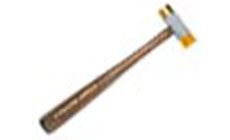
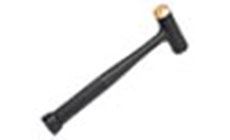
There must be a better word than "hammering"
Find the right spot on your benchtop
Take it easy
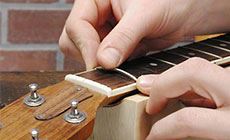
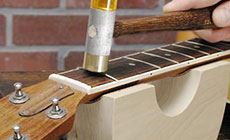
Slightly over-bend the fret first
You can also use a fret press
The golden rule: Test On Scrap!
